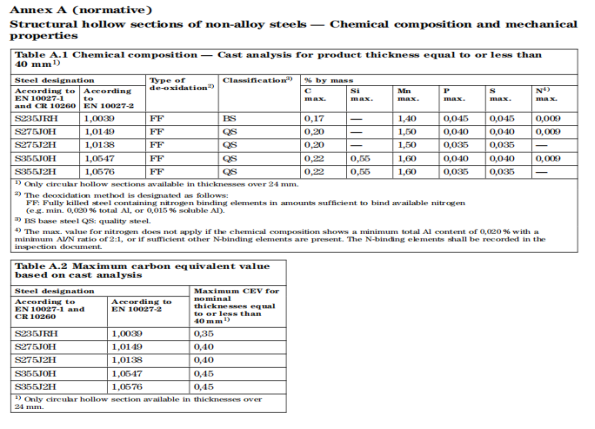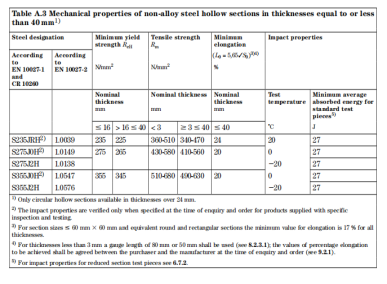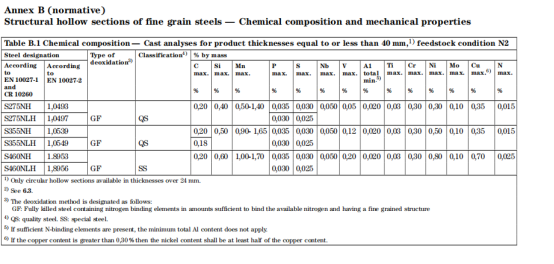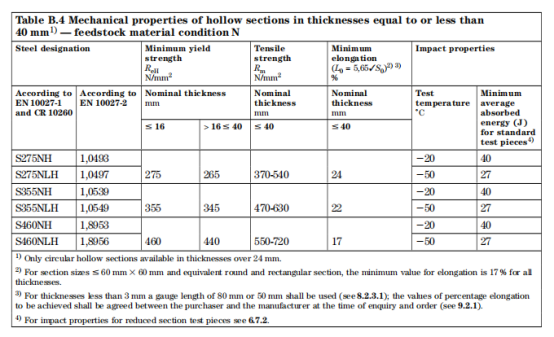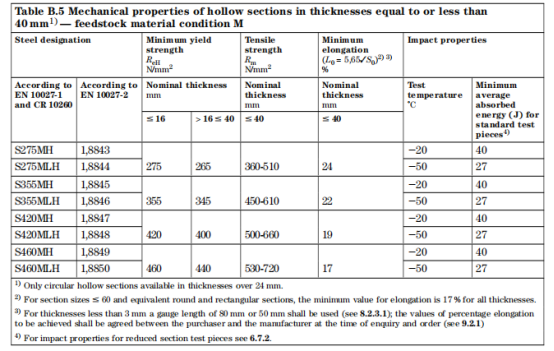
BS EN10219-1 : 1997
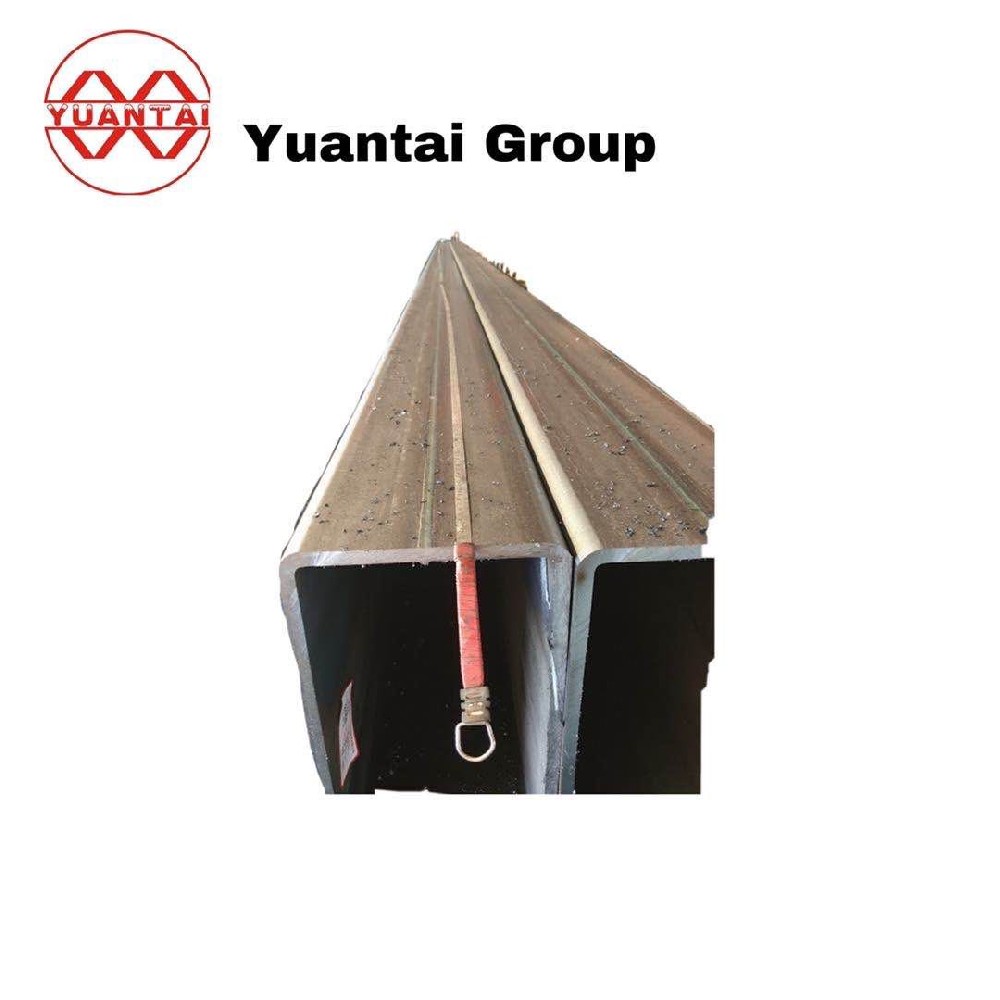
This Part of this European Standard specifies the technical delivery requirements for cold formed welded structural hollow sections of circular, square or rectangular form and applies to structural hollow sections formed cold without subsequent heat treatment.
1 Definitions
1.1 cold forming
A process where the main forming is done at ambient temperature.
1.2 normalizing rolling
A rolling process in which the final deformation is carried out in a certain temperature range leading to a material condition equivalent to that obtained after normalizing so that the specified values of the mechanical properties are retained even after normalizing.
1.3 thermomechanical rolling
A rolling process in which the final deformation is carried out in a certain temperature range leading to a material condition with certain properties which cannot be achieved or repeated by heat treatment alone. Subsequent heating above 580 ÊC may lower the strength values.
2 Classification and designation
2.1 Classification
2.1.1 Within the strength grades of the non-alloy steels given in annex A, three qualities JR, J0 and J2 are specified. These differ in respect of specified impact requirements, limits on values of various elements with particular reference to sulfur and phosphorus and the inspection and testing requirements.
2.1.2 Within the strength grades of the fine grain steels given in annex B, four qualities N, NL, M and ML are specified. These differ in respect of the carbon, sulfur and phosphorus content and low temperature impact properties.
In accordance with the classification system in EN 10020 steel grades S275 and S355 are non-alloy quality steels and steel grades S420 and S460 are alloy special steels.
2.2 Designation
2.2.1 For the products covered by this European Standard the steel names are allocated in accordance with EN 10027-1 and CR 10260; the steel numbers are allocated in accordance with EN 10027-2.
2.2.2 For non-alloy steel structural hollow sections the designation shall consist of:
± the number of this European Standard (EN 10219); ± the capital letter S for structural steel; ± the indication of the minimum specified yield
strength for thicknesses # 16 mm expressed in N/mm2; ± the capital letters JR for the qualities with specified impact properties at room temperature; or ± the capital letter J and a number 0 or 2 for the qualities with specified impact properties at 0 ÊC and 220 ÊC respectively; ± the capital letter H to indicate hollow sections.
2.2.3 For fine grain steel structural hollow sections the designation shall consist of: ± the number of this European Standard (EN 10219); ± the capital letter S for structural steel; ± the indication of the minimum specified yield strength for thicknesses # 16 mm expressed in N/mm2; ± the capital letter N to indicate normalized or normalized rolled feedstock material (see 6.3); ± the capital letter M to indicate thermomechanically rolled feedstock material (see 6.3); ± the capital letter L for the qualities with specified minimum values of impact energy at a temperature of 250 ÊC; ± the capital letter H to indicate hollow sections.
2.2.4 The product shall be designated as illustrated by the following examples:
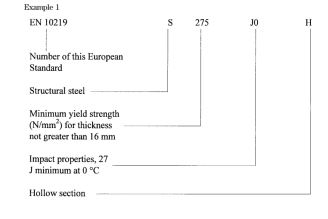
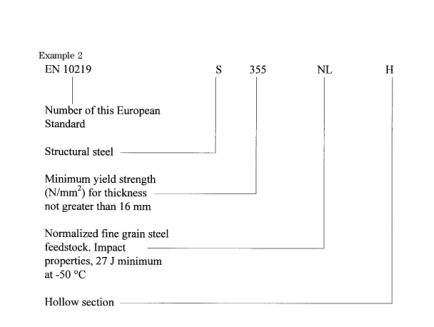
3 Mechanical properties
For impact tests, standard V-notch test pieces in accordance with EN 10045-1 shall be used. If the nominal product thickness is not sufficient for the preparation of standard test pieces, the test shall be carried out using test pieces of width less than 10 mm, but not less than 5 mm. The minimum average values given in tables A.3, B.4 and B.5 shall be reduced in direct proportion of the actual width of the test piece to that of the standard test piece. Impact tests are not required for nominal thickness less than 6 mm.
4 Impact test pieces
Impact V-notch test pieces shall be prepared and machined in accordance with EN 10045-1. In addition, the following requirements apply:
a) For nominal thicknesses greater than 12 mm, standard test pieces shall be machined in such a way that one side is not further away than 2 mm
from a rolled surface;
b) For nominal thicknesses less than or equal to 12 mm, when test pieces with reduced sections are used, the width shall be greater than or equal to 5 mm.
